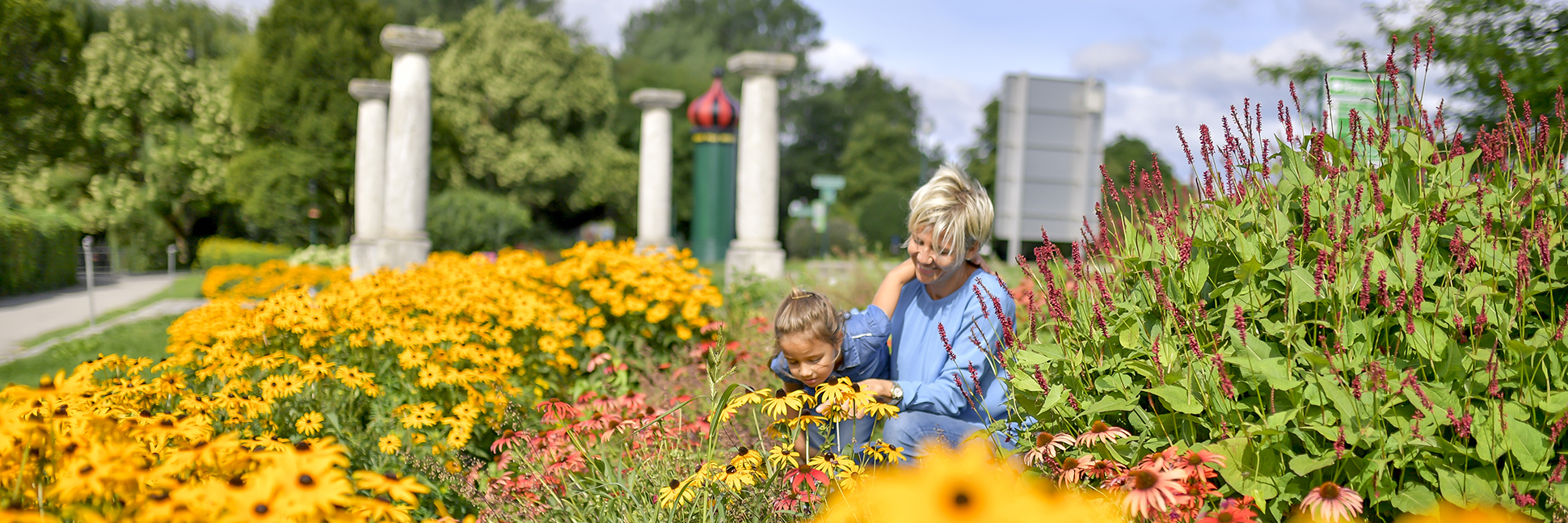The history of the garden city of Tulln
The history of Gartenstadt Tulln goes back more than half a century. It all began with the gardening businesses located in the region and the idea of the horticultural fair. Sustainability, ecological issues and environmental protection played a key role in the city's policy from an early stage. Increasing the quality of life through ecological and technological innovation as well as green space design in the cityscape were the declared goals that had to be anchored in the consciousness of the citizens. The elements that have been created over decades to achieve this now combine to create an overall experience and form the unique character of the garden city of Tulln: the International Horticultural Fair and DIE GARTEN TULLN, the green and flourishing cityscape (in which the citizens of Tulln play a major role), the natural habitat on the Danube and the concentration of specialist research and teaching facilities in the region.
From Tulln flower parade to international green competence center
Tulln's Europe-wide reputation as a garden city began in 1953 with the first flower festival. Back then, 45 participants presented their decorated vehicles at the flower parade - from motorcycles to VW Beetles and tractors. An idea that was supported by Tulln's gardening businesses and expanded in 1954 to include a flower show. It formed the basis for the format of a horticultural fair, which took place in 1965 as the 1st Austrian Horticultural Fair and achieved an international profile in the 1980s.
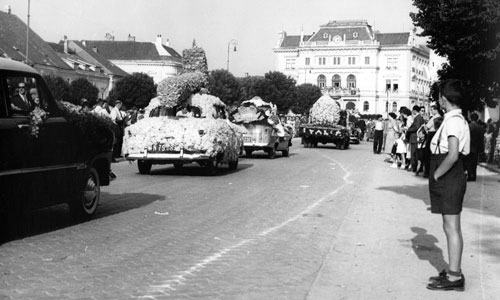
With the expansion, the need for space also grew and in 1967 the Tulln exhibition grounds were built with the first hall - still made of wood. It was further expanded in 1969 with the Danube Hall, followed by the Jubilee Hall in 1978 and the Lower Austria Hall in 2006. Opened in 2015, Hall 3 is the largest exhibition hall in Austria with an area of 6,500 m².
Today, around 530 exhibitors occupy an area of 85,000 square meters at around 11 trade fairs each year, with the International Horticultural Trade Fair still being the highlight of the trade fair year and an important economic factor for the city. Another milestone in the history of the garden city was the hosting of the 2008 State Garden Show with the construction of the GARTEN TULLN. Originally planned for 10 years, the decision was soon made to make the visitor magnet a permanent exhibition. Around 230,000 visitors are counted each year.
In 2015, the "Nature in the Garden" campaign also set up its headquarters in Tulln. The Lower Austrian initiative was founded in 1999 and stands for natural and ecological "gardening" with the core criteria of gardening without artificial fertilizers, pesticides and peat. By combining these facilities with the large number of horticultural companies in the region and the biological and technological research and teaching facilities, Tulln has developed into Austria's largest green competence center.
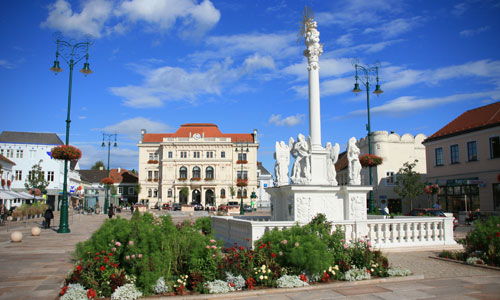
From a flourishing cityscape to an excellent quality of life
The flower parade and the horticultural fair were also a commitment to more green space and attractive floral design in the cityscape. Over the decades, the city administration has shaped today's garden city of Tulln by designing squares and streets with green islands, flowerbeds, tree avenues and water features.
The redesign of the Sparkassenpark in 1955 marked the beginning of targeted green space design. The Nußallee was redesigned in 1976 and the Zentallee was extended in 1977. The city park in 1979 and the transformation of the city moat into a green zone in 1983 were also project steps in the consistent realization of a "garden city". The measures were part of a concept formulated in the 1980s as a binding guideline and still valid today, which established green planning with infrastructure as an equal component of urban development. These guidelines were also applied to Rudolfstrasse, which was adapted in 1988, Wiener Strasse, which was renovated in 1989, and the design of Rathausplatz. In 1991, the district fountain was erected and the appearance of the main square was adapted. The increased installation of traffic circles instead of traffic lights or unregulated intersections, which began at the same time, aimed not only to improve the traffic situation but also to make the traffic areas greener. The motto was: "Flowers and water instead of concrete and neon lighting!" The opening of the "Rosenarcade" shopping center in 2007, the construction of the underground car park and the large-scale redesign of the main square by 2009 followed on from the garden city motto and realized the political vision of a car-free city and shopping center with guest gardens, green spaces and attractive floral decorations.
One of the main pillars of urban planning is the involvement of the population. Since the 1950s, there have not only been calls to decorate houses and gardens with flowers, but also active support for this. Citizens contribute their personal share to the floral design of the city in various campaigns and competitions. These efforts are award-winning: Tulln is a "flower city", a "city of trees", has repeatedly won international and national flower competitions (2 x "Most Beautiful Flower City in Europe"/Gold at the Entente Florale 2001 and 2008, Silver 1994), is designated "pedestrian and bicycle friendly" and has the title "liveable and lovable".
The Danube as an urban habitat
Until the 1980s, the Danube repeatedly threatened the city with flooding. Dams were built to create a protective boundary, but these could not completely avert the danger. In 1954 and 1965, the dams threatened to break after weeks of heavy rain, but in 1981 the worst was averted during the "Little Flood".
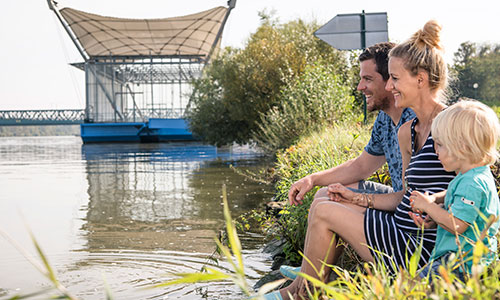
The expansion of flood protection became a guiding principle of urban development and also made greater recreational use of the Danube floodplains and banks possible. In 1979, for example, the Aubad with a 50,000 square meter bathing lake was opened between the right bank of the Danube and the Kleine Tulln. Above all, the regulation of the course of the Danube in the course of the construction of the Greifenstein power plant in the 1980s brought more safety. Some of the existing dams became non-functional and could be dismantled to create a near-natural structure and planting of the banks and a floodplain area. The newly constructed protective embankment along the city center made it possible to redesign the riverbank area into an extensive recreational area for the city. Since 1984, the attractively designed Danube embankment with the Danube fountain and the international Danube cycle path that runs along it has also been used by tourists to a greater extent.
A temporary stage was erected on the waterfront for events back in the 1950s. In the 1980s, a floating platform was installed and in 1999 the Danube stage opened in its current form, where open-air concerts are regularly held and which is now the cultural focus of the Tulln Summer.
Today, the Danube with its waterscapes is no longer seen as a threat, but as an integral element of the garden city, as a local recreation area and urban living space. 450,000 square meters of floodplain and the 300,000 square meter Aubad form its heart.
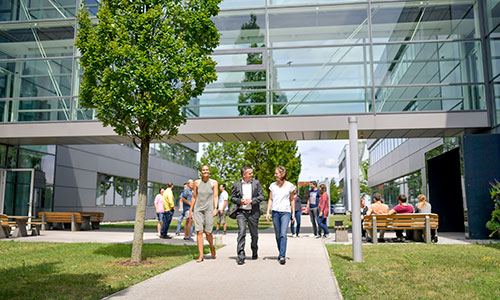
From ecological awareness to an innovative showcase city
The 1960s and 70s were characterized throughout Europe by the discussion about the environmental compatibility of energy production. Tulln adopted an ecological position early on. This was evident not only in the forward-looking planning of environmentally friendly municipal infrastructure facilities and the repeated influence on industrial companies to increase environmental compatibility.
An expression of this is the protest against the Zwentendorf nuclear power plant, on the occasion of which the "March to Zwentendorf" took place on June 12, 1977. In the 1980s, an environmental protection advisory board was founded, interventions were made in the construction of the Greifenstein power plant, a fully biological sewage treatment plant was built and health protection measures were implemented at the Dürnrohr coal-fired power plant. In 2001, Tulln became a partner in the European showcase project "Zero Emission City", which set itself the goal of covering one hundred percent of the city's energy requirements with renewable raw materials.
The establishment of training and research facilities in the garden, ecology and (agricultural) biotechnology sectors from the 1990s onwards and their further expansion to the present day have made Tulln a center of innovation - today concentrated in the form of the Tulln Technopol campus. It all began with the Inter-University Department of Agricultural Biotechnology (IFA-Tulln), a joint project of the University of Natural Resources and Life Sciences, Vienna (BOKU), the Vienna University of Technology (TU) and the University of Veterinary Medicine, Vienna (VetMed), which was initiated in 1988 and opened in 1994. To date, the "Campus Tulln" has grown to include the University of Applied Sciences (2002), the Technology and Research Center (TZT) (2005) and the University and Research Center (UFT) at Technopol Tulln (2011). The city has thus developed into an internationally important biotech location. At the same time, the targeted establishment of specialist companies (Techno-Park Tulln) and the resulting overarching link between teaching, research and business supports the innovative strength of Tulln as a location and also creates jobs in the region.
The city of Tulln has received international recognition and numerous awards for its investments, including the "International Award for Liveable Communities" (bronze and silver, 2004 and 2009), the Hans Czettel Prize for the Environment and Nature Conservation (2007 and 2013), the "Climate Star" (2014) and the Austrian Soil Protection Prize (2014).
A list of all prizes and awards in various subject areas can be found here.
